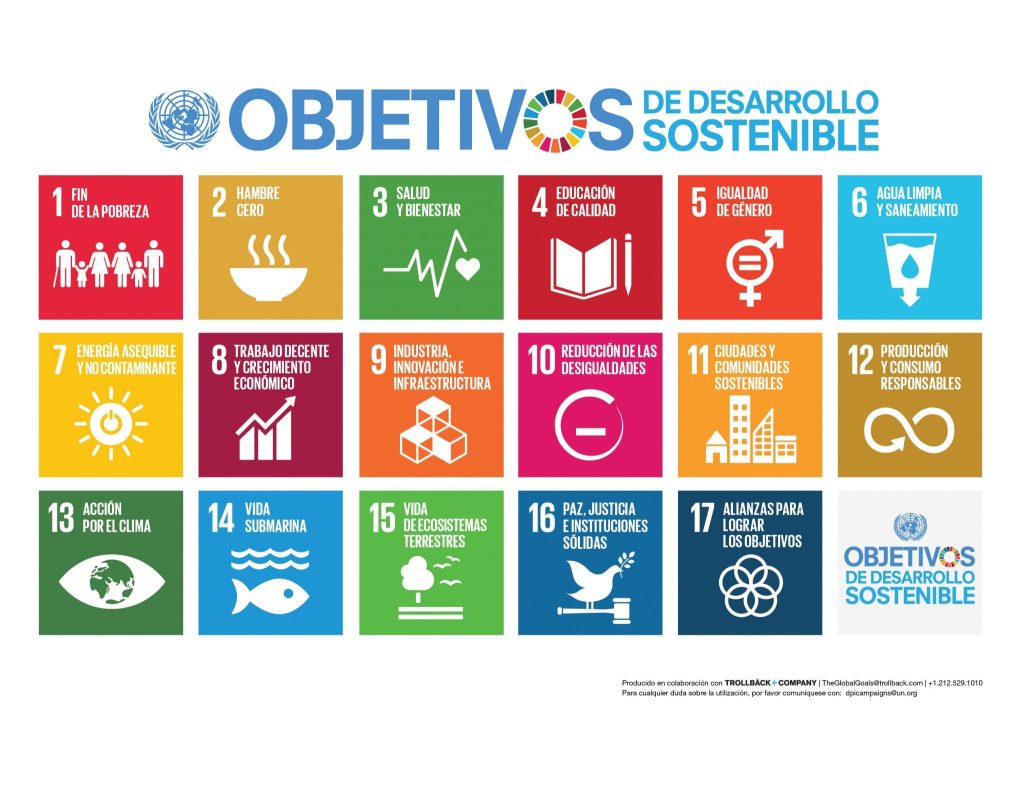
Menu

As 2023 comes to a close, and now heading into an important year for our industry, the Sustainable Development Goals (SDGs) stand as signposts to guide us towards a fairer, more enduring future. The chemical industry is a key player in this context, playing an essential role for achievement of these ambitious goals.
Illuminating data from the sector
To understand the
scale of the chemical industry’s impact, you need to consider some key data. According to studies by the International Council of Chemical Associations (ICCA), the chemical industry contributes $5.7 trillion in gross value added,
$51 billion in R&D investment and 120 million jobs globally*1.
As well as highlighting the sector’s vitality, these figures also highlight its ability to drive innovation and the adoption of sustainable practices.
Looking at Spain, a study carried out by the Spanish Chemical Industry Business Federation, FEIQUE, showed a 16.3% rise in chemical industry turnover, reaching a record figure of almost €90 billion.
In foreign markets, the figure grew by 29.2%, to €63,626 million. This means the chemical sector is still the Spanish economy’s prime exporter (according to the Spanish
National Classification of Economic Activities, CNAE), consolidating 19.5% of total industrial exports*2.
We should note, and recognise, that our industry is helping to meet many of the SDGs, not just by offering solutions to environmental and human problems, but also by driving innovation, digitisation and sustainable economic growth.
The chemical industry and the SDGs
Our industry invests continually in technology
and new methods to help meet various points of the 2030 Agenda for the Sustainable Development Goals, adopted by the UN General Assembly. Here are a few examples:
SDG 6: Clean Water and Sanitation. The chemical industry helps provide drinking water and to secure adequate supplies by:
1. Developing technologies for sustainable treatment of industrial waste water. Read more about how water is made drinkable
2. Reducing the environmental impact of water pollution caused by chemical processes.
On a more strategic – and political – note, the importance of rethinking water governance and considering the water cycle as a common good for all humanity was emphasised during the 9th Water Dialogues event held in Madrid on 28 November 2023.
Improving global water management is a vital part of mitigating the climate crisis and preventing the escalation of social and economic phenomena, disorder, mass
migration and conflict*4.

SDG 7: Affordable and Clean Energy. The drive towards cleaner and renewable energy sources finds a strategic ally in the chemical industry. The production of materials for solar cells, efficient batteries and energy storage systems depends largely on chemical innovations, as well as on the implementation of more efficient and
sustainable processes for the industry to generate the energy it uses in its own production.
At the Acideka
Group, we are aware of the importance of reducing our carbon footprint, so we started a project to build a photovoltaic plant in 2023, which will be operational in 2024. Among its many benefits, this project will help reduce emissions of polluting gases into the atmosphere, by the equivalent of 1,112 tonnes of CO2 per year. Read more here.
SDG 8: Decent Work and Economic Growth. According to the study by ICCA and Oxford Economics mentioned above, the global chemical sector creates 120 million jobs, and each of those positions results in the creation of seven additional jobs in other economic sectors. In the case of Spain, direct employment in the Spanish chemical sector grew by 12.1%, to 234,200 direct employees*5.
SDG 9: Industry, Innovation and Infrastructure. The chemical industry is a key driver for innovation, by developing new materials, processes and technologies for different industries.
According to a study by Deloitte, on the future of the chemicals value chain, an indisputable dimension for the chemicals value chain is innovation and technology, consisting of three main
topics:
1. Product innovation (including application technologies)
2. Process innovation
3. Circular technology
The chemicals value chain in Europe is likely to play a leading role in all three aspects, particularly in the speciality and consumer chemicals segment*6.
Processes for collecting, sorting and processing waste will be highly sophisticated and automated to enable the circular economy. Recycling technologies will enable the production of chemicals, in particular from mixed recycling materials or waste, and will open up a new source of raw materials.
SDG 12: Responsible Production and Consumption. Food security and sustainable agriculture are crucial objectives within the SDGs. The chemical industry has played a pivotal role in developing controlled-release fertilisers, safer pesticides and selective herbicides. These chemical solutions not only increase agricultural efficiency, but they also reduce soil and water pollution.
Another of the major environmental challenges of our time is the proliferation of plastic waste. The chemical industry though has responded with ingenious solutions.
Innovations such as biodegradable polymers and recyclable plastics are changing the narrative.
Finally, an important source of support is the implementation of a circular economy by:
1. Reducing waste by designing more sustainable products and more efficient manufacturing processes.
2. Developing safer, more environmentally friendly chemicals.
3. Reusing waste to create new chemical solutions.
When it comes to decoupling economic growth from environmental degradation, increasing resource efficiency and promoting a circular economy, the Acideka Group has been a pioneer in this model since its inception in 1967. Read more about the circular economy in the Acideka Group.
The journey towards sustainability is not simply an individual responsibility of companies, but a collective mission. Collaboration between industry, academia and governments is essential.
In spite of obvious successes, the chemical industry faces ongoing challenges, such as responsible product management, optimal use of resources in production processes and the existence of certain substances such as microplastics, which are present in natural and modified aquatic environments, and are a serious environmental and human problem.
As a sector, we need to see these challenges as opportunities to innovate and develop new solutions to help overcome the problems we have now. Companies are responding to these challenges through investments in cleaner technologies, more efficient production processes and the adoption of sustainability standards.

The global chemical industry in numbers: The ICCA commissioned Oxford Economics to assess in detail the contributions the chemical industry makes to the global economy and the critical roles it plays in improving people’s daily lives. This infographic spotlights the main findings.
Trends for 2024
A study of the
global industry outlook, conducted by the Economist Intelligence Unit, highlights the following
sustainability-related trends*7:
1.
The
push for renewable energy supplies will continue. Combined solar and wind
energy consumption will grow by approximately 11% year-on-year globally. Many
countries will also rush to create more hydrogen production capacity.
2.
To
meet their hydrogen production targets, many countries around the world will
hurry to build more production capacity by 2024. This will not be an easy task
though. Most current hydrogen production is grey hydrogen, obtained by
reforming fossil fuels. Rapid growth in “green” hydrogen production will
require a massive expansion of electrolysis capacity, which will present
numerous challenges. Hydrogen production by electrolysis requires intensive use
of minerals and metals and it shares some of the main raw materials used in the
manufacture of renewable energy technologies.
3.
The
healthcare sector will also come under pressure to reduce its own emissions,
which account for 8.5% of total emissions in the US and around 5% in the EU.
Much of this is due to energy use by healthcare providers and pharmaceutical
companies. Additionally, an estimated 5.2 million people die annually from
diseases caused by unmanaged medical waste. All these sources will come under
new scrutiny as legislation tightens on supply chain monitoring and
climate-related disclosures.
In conclusion,
everyone in the chemical industry has a duty to remember that, far from being
an obstacle to sustainability, our sector is an essential catalyst for
achieving the SDGs by 2030. As companies continue to innovate and collaborate,
their positive impact will expand, contributing significantly to building a
fairer, more sustainable future for generations to come.
Sources:
*1 The Global Chemical Industry: Catalysing growth and addressing our world´s sustainability challenges, ICCA
*2 https://www.feique.org/wp-content/uploads/2023/10/Datos-Clave-16.9-ACT-OCT23-scaled.jpg
*4 https://www.oecd.org/water/press-release-launch-of-the-commission-on-the-economics-of-water.pdf
*5 https://www.feique.org/wp-content/uploads/2023/10/Datos-Clave-16.9-ACT-OCT23-scaled.jpg
Comments or queries: comunicaciones@acideka.com